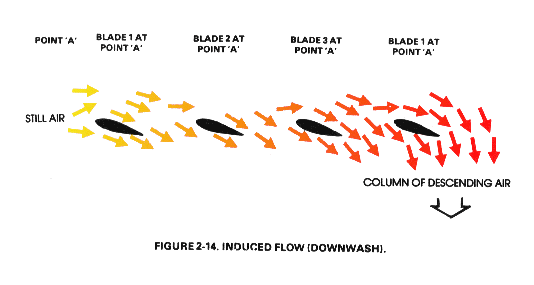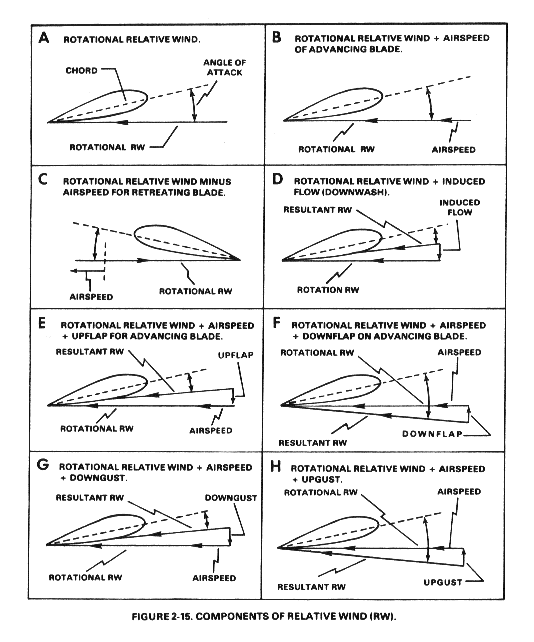

Relative wind is created by movement of an airfoil through the air. As an example, consider a person sitting in an automobile on a no-wind day with a hand extended out the window. There is no airflow about the hand since the automobile is not moving. However, if the automobile is driven at 50 miles per hour, the air will flow under and over the hand at 50 miles per hour. A relative wind has been created by moving the hand through the air. Relative wind flows in the opposite direction that the hand is moving. The velocity of airflow around the hand in motion is the hand's airspeed.
When the helicopter is stationary on a no-wind day, rotational relative wind is produced by rotation of the rotor blades. Since the rotor is moving horizontally, the effect is to displace some of the air downward. The blades travel along the same path and pass a given point in rapid succession (a three-bladed system rotating at 320 revolutions per minute passes a given point in the tip-path plane 16 times per second).
This figure illustrates how still air is changed to a column of descending air by rotor blade action:

This flow of air is called an induced flow (downwash). It is most predominant at a hover under still wind conditions. Because the rotor system circulates the airflow down through the rotor disk, the rotational relative wind is modified by the induced flow. Airflow from rotation, modified by induced flow, produces the resultant relative wind. In this illustration, angle of attack is reduced by induced flow, causing the airfoil to produce less lift:

When the helicopter has horizontal motion, the resultant relative wind discussed above is further changed by the helicopter airspeed. Airspeed component of relative wind results from the helicopter moving through the air. It is added to or subtracted from the rotational relative wind, depending on whether the blade is advancing or retreating in relation to the helicopter movement. Induced flow is also modified by introduction of airspeed relative wind. The pattern of air circulation through the disk changes when the aircraft has movement. Generally the downward velocity of induced flow is reduced. The helicopter moves continually into an undisturbed airmass, resulting in less time to develop a vertical airflow pattern. As a result, additional lift is produced from a given blade pitch setting.